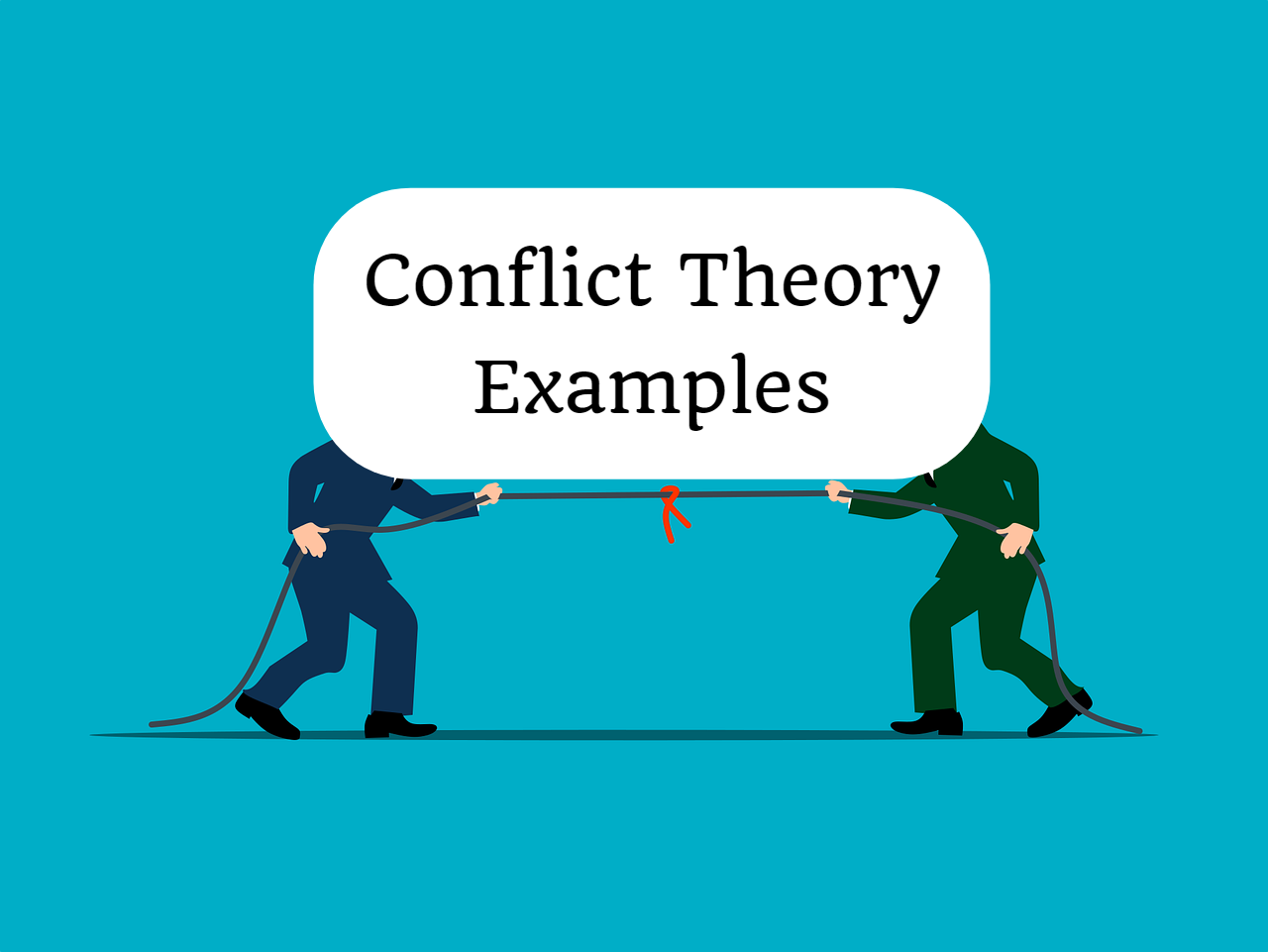Conflict Theory Examples Real-Life
Conflict theory is a sociological perspective that views society as a system characterized by inequality and conflict. According to conflict theory, society is composed of different groups with competing interests, such as the wealthy and the poor, employers and employees, or dominant and subordinate ethnic groups. These groups are in constant conflict over resources, power, and social status.
Conflict theorists argue that this competition for resources and power leads to the perpetuation of inequality and social stratification. In this view, the dominant groups in society use their power to maintain their privileged position, while subordinate groups struggle to gain more resources and improve their social standing.
Conflict theory, rooted in the works of Karl Marx, focuses on the role of power and coercion in shaping social relations. According to Marx, society is divided into two main classes: the bourgeoisie, who own the means of production, and the proletariat, who must sell their labor to survive. This fundamental class conflict forms the basis of societal dynamics.
Conflict theorists argue that the bourgeoisie use their economic power to control and exploit the proletariat, extracting surplus value from their labor. This exploitation leads to alienation and conflict between the classes. Additionally, conflict theory extends beyond just economic factors to include other forms of inequality, such as those based on race, gender, and ethnicity.

In the context of conflict theory, institutions such as the government, education system, and media are seen as tools used by the dominant class to maintain their power and control over resources. For example, the education system may perpetuate the status quo by teaching values and beliefs that benefit the ruling class, while the media may frame issues in ways that support the interests of the wealthy and powerful.
Conflict theory also emphasizes the role of conflict in driving social change. According to this perspective, change occurs when subordinate groups challenge the status quo and the dominant ideology. This can take the form of protests, revolutions, or other forms of collective action aimed at challenging existing power structures and creating a more equitable society.
Examples:
Here are examples illustrating how conflict theory manifests in real-life situations, highlighting the dynamics of power, inequality, and social change in society:
Class Conflict:
Class conflict, a central concept in conflict theory, is evident in various aspects of society. It reflects the tension between the bourgeoisie, who own the means of production, and the proletariat, who sell their labor. This conflict arises from the inherent inequality in capitalist systems, where the bourgeoisie exploit the proletariat to maximize profits. In real life, class conflict is visible in labor strikes and protests, where workers demand better wages and working conditions. It is also seen in income inequality, with the wealthy elite controlling a disproportionate amount of wealth. Access to education and healthcare further illustrates class conflict, as the wealthy have greater access to quality services. Issues like housing and gentrification highlight the conflict between developers and lower-income residents. Additionally, the influence of money in politics and limited social mobility underscore the ongoing nature of class conflict in society, reflecting the unequal distribution of resources and power.
Racial and Ethnical Conflict:
Racial and ethnic conflict, as understood through conflict theory, is the result of ongoing struggles between dominant and subordinate groups over resources, power, and opportunities. This conflict is fueled by systemic inequalities and discrimination based on race and ethnicity.
Real-life examples of this conflict include historic movements like the American Civil Rights Movement, where African Americans fought against racial segregation and discrimination to attain equal rights and opportunities, challenging the dominance of the white majority. Apartheid in South Africa also exemplifies racial conflict, as the system enforced racial segregation and discrimination, leading to widespread resistance and struggle for racial equality.
Other examples include instances of ethnic cleansing and genocide, such as the Rwandan genocide, which stem from deep-seated animosities and power struggles between different ethnic groups. Conflicts over immigration, racial profiling, and police brutality further highlight the ongoing racial and ethnic tensions, reflecting systemic biases and inequalities within societies. Overall, racial and ethnic conflict is a complex issue rooted in historical injustices and structural inequalities, highlighting the need for ongoing efforts to address these deep-seated conflicts and promote racial and ethnic equality.
Gender Conflict:
Gender conflict, as seen through the lens of conflict theory, is the result of power imbalances and inequalities between men and women in society. This conflict manifests in various forms and is rooted in the patriarchal structures that privilege men and subordinate women.
One real-life example of gender conflict is the persistent gender pay gap, where women are paid less than men for the same work. This reflects a broader issue of economic inequality and the exploitation of women’s labor. Women’s struggle for equal pay and opportunities is a form of resistance against the dominant group (men) who benefit from this inequitable system.
Another example is the #MeToo movement, which emerged as a response to widespread sexual harassment and assault. The movement represents a collective challenge to the power dynamics that allow such behavior to persist, highlighting the conflict between men (as the dominant group) and women (as the subordinate group) over issues of gender equality and sexual autonomy.
Gender conflict is also evident in political and social spheres, where women are often underrepresented and marginalized. Women’s movements and feminist activism seek to challenge these power structures and advocate for gender equality in decision-making processes and social institutions.
Political Conflict:
Political conflict, as viewed through conflict theory, arises from competing interests, values, and ideologies within society. This conflict is a result of the unequal distribution of power and resources, with dominant groups seeking to maintain their privilege while subordinate groups push for change and greater equality.
One real-time example of political conflict is the polarization and divisiveness seen in many democratic societies. This polarization often stems from conflicting political ideologies and values, such as conservatism and liberalism, which are deeply rooted in different views on issues like social welfare, immigration, and environmental policy. These conflicting ideologies lead to political gridlock and hinder efforts to address pressing social and economic issues.
Another example is the rise of populist movements, which often exploit social and economic grievances to mobilize support against the perceived elite or establishment. Populist leaders often frame political conflict as a struggle between “the people” and “the elite,” tapping into feelings of resentment and alienation among marginalized groups.
Religious Conflict:
Religious conflict, when viewed through conflict theory, arises from competition over resources, power, and influence among different religious groups. This conflict is often rooted in historical grievances, cultural differences, and competing beliefs and values.
One real-time example of religious conflict is the ongoing tensions in the Middle East, particularly between Sunni and Shia Muslims. This conflict has deep historical roots and is fueled by political, social, and economic factors. The rivalry between Saudi Arabia (a Sunni-majority country) and Iran (a Shia-majority country) is often seen as a proxy for this larger religious conflict, with both countries vying for influence and power in the region.
Another example is the conflict between Hindus and Muslims in India. This conflict has been fueled by historical events, such as the partition of India in 1947, which led to the creation of Pakistan as a separate Muslim-majority country. Since then, there have been recurring tensions and violence between Hindus and Muslims in the region, often exacerbated by political and social factors.
Religious conflict is also evident in issues of religious freedom and tolerance. In many parts of the world, religious minorities face discrimination and persecution due to their beliefs. This conflict reflects the struggle between dominant religious groups seeking to maintain their power and influence, and minority groups seeking to practice their faith freely.
Educational Conflict:
Educational conflict, as seen through the lens of conflict theory, arises from inequalities in access to education, resources, and opportunities. This conflict is rooted in the unequal distribution of power and resources within educational systems, leading to disparities in outcomes and experiences for different groups.
One real-time example of educational conflict is the ongoing debate over school funding and resource allocation. In many countries, schools in wealthier areas receive more funding and resources than schools in poorer areas. This disparity perpetuates educational inequalities, as students in poorer schools may lack access to quality teachers, facilities, and educational materials.


Another example is the conflict over standardized testing and its impact on educational outcomes. Standardized tests are often criticized for favoring students from privileged backgrounds and perpetuating inequalities. This conflict reflects a broader struggle over the purpose and direction of education, with some advocating for more holistic and inclusive approaches to assessment.
Healthcare Conflict:
Healthcare conflict, when viewed through the lens of conflict theory, arises from inequalities in access to healthcare, disparities in healthcare outcomes, and the distribution of resources within healthcare systems. This conflict is rooted in the unequal distribution of power and resources, leading to competing interests and values among sdifferent groups within the healthcare sector.
One real-time example of healthcare conflict is the debate over universal healthcare. In many countries, there are ongoing conflicts over the implementation of universal healthcare systems, with some advocating for a more equitable and inclusive healthcare system, while others argue for a more market-driven approach. This conflict reflects broader tensions over the role of government in healthcare and the distribution of healthcare resources.
Conclusion:
Conflict theory provides a valuable framework for understanding the various forms of conflict that arise in society, including class, racial, gender, political, religious, educational, and healthcare conflicts. These conflicts are rooted in the unequal distribution of power, resources, and opportunities, leading to tension and struggle between dominant and subordinate groups. Real-life examples illustrate how conflict theory can help us understand the dynamics of social relations and institutions, highlighting the role of power, coercion, and competition in shaping societal conflicts. By recognizing and addressing these conflicts, societies can work towards greater equality, justice, and social change.

